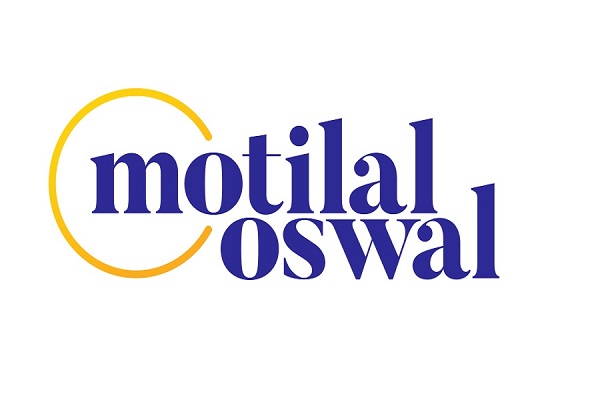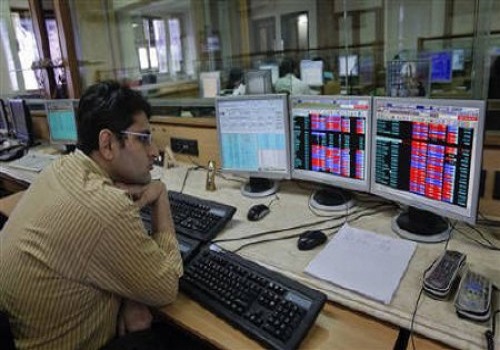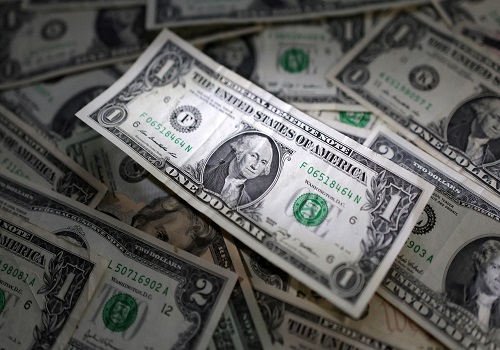Copper trading range for the day is 854.4-869.2 - Kedia Advisory

Gold
Gold prices declined by 0.61% to settle at 95,875, pressured by stronger-than-expected U.S. economic data that dimmed the appeal of non-yielding assets like bullion. April’s data revealed that U.S. personal income rose more than anticipated, while spending and inflation aligned with forecasts, reinforcing the Federal Reserve’s cautious stance on rate cuts. This heightened the opportunity cost of holding gold, contributing to the selloff. Open interest dropped by 5.89% to 13,415, suggesting long liquidation by investors as the market reassesses interest rate expectations. Geopolitical tensions added a layer of uncertainty. Former President Trump accused China of violating trade agreements and moved forward with reciprocal tariffs, reigniting trade war fears. However, the renewed risk-off sentiment failed to significantly support gold prices due to the offsetting strength of U.S. economic fundamentals. On the physical demand front, India saw subdued activity, with domestic prices rising and the wedding season drawing to a close. Discounts on gold widened to $31 per ounce from $49 last week, indicating weak retail demand. In contrast, China’s imports surged to their highest in over a year, though premiums narrowed slightly. Globally, gold demand rose 1% YoY in Q1 2025, driven by a 170% spike in investment demand, offsetting declines in coin purchases and central bank buying. Technically, gold is under long liquidation pressure. Immediate support is at 95,430, with further downside towards 94,980. On the upside, resistance is seen at 96,310; a break above could target 96,740.
Trading Ideas:
* Gold trading range for the day is 94980-96740.
* Gold fell as strong U.S. income data reduced urgency for Fed rate cuts.
* Fed signals reduced likelihood of near-term easing, increasing gold’s opportunity cost.
* Trump accused China of violating trade deal, reviving trade war fears.
Silver
Silver prices declined by 0.83% to settle at 97,015, as a firmer U.S. dollar and investor reaction to renewed tariff risks pressured the market. The dip followed a U.S. federal appeals court decision temporarily reinstating President Donald Trump's broad tariffs, adding volatility to global trade sentiment. Meanwhile, economic data supported mixed market views. The U.S. Core PCE Price Index, the Federal Reserve’s preferred inflation gauge, rose just 0.1% month-over-month in April—keeping rate cut hopes alive despite a strong 0.8% rise in personal income, which far exceeded expectations. On the supply-demand front, silver continues to face a structural deficit, expected to extend into 2025 for the fifth straight year. Total demand is forecast at 1.20 billion ounces, while the deficit narrows to 117.6 million ounces due to a 2% rise in total supply and a modest 1% drop in demand. Industrial fabrication remains the key demand driver, forecast to surpass 700 million ounces this year, driven by ongoing growth in green economy applications. Investment demand for silver coins and bars is also projected to rebound 7%, especially in Europe and North America, recovering from last year’s steep 22% decline. However, jewelry and silverware demand are expected to fall, particularly in India, where high prices have suppressed consumer interest. Technically, silver is under fresh selling pressure with a 6.44% rise in open interest to 19,521, signaling new short positions. Immediate support is at 96,490, with further downside towards 95,960. Resistance is seen at 97,800, and a break above could test 98,580.
Trading Ideas:
* Silver trading range for the day is 95960-98580.
* Silver slipped as dollar strengthened and traders absorbed Trump tariff court reversals.
* Federal appeals court reinstated Trump’s tariffs, reversing earlier trade court ruling.
* U.S. personal income surged 0.8% in April, beating expectations and lifting economic sentiment.
Crude oil
Crude oil prices edged lower by 0.23% to settle at 5,203, pressured by growing concerns over potential oversupply and geopolitical tensions. The decline followed reports that OPEC+ may consider increasing oil output for July beyond the previously planned hikes of 411,000 barrels per day for May and June. This shift in tone, coupled with Kazakhstan's refusal to reduce production, has stirred internal debate within the alliance and raised the possibility of a larger-than-expected supply boost. These developments come at a time when oil markets are already grappling with demand uncertainty and excess supply fears. Adding to the bearish sentiment, U.S. President Donald Trump's accusations that China violated a recent trade deal—though lacking specifics—rekindled fears of renewed trade tensions between the world’s two largest economies. On the supply side, U.S. crude inventories surprisingly dropped by 2.795 million barrels last week, defying market expectations of a 0.6 million barrel build. Gasoline and distillate stocks also declined, reflecting healthy downstream demand. However, a modest build in Cushing, Oklahoma storage capped the bullish impact of inventory draws. Meanwhile, the International Energy Agency (IEA) revised its 2025 oil demand growth forecast slightly higher to 740,000 bpd, citing expected economic recovery and lower oil prices. Technically, crude oil remains under long liquidation pressure, with open interest falling 12.44% to 10,230. Immediate support lies at 5,126, with further downside toward 5,050. Resistance is seen at 5,284, and a break above this level could lead to a test of 5,366.
Trading Ideas:
* Crudeoil trading range for the day is 5050-5366.
* Crude oil dropped after reports OPEC+ may discuss oil output hike larger than 411,000 bpd for July.
* Kazakhstan's statement that it won't cut production has sparked debate in OPEC+.
* U.S. crude stocks fell 2.795 million barrels, defying expectations of a build.
Natural gas
Natural gas prices fell by 1% to settle at 296.4, as forecasts for weaker near-term demand outweighed expectations for higher demand next week. Despite a slight dip in daily gas output to 104.3 billion cubic feet per day (bcfd), down from 104.7 bcfd, the decline was less than previously projected by LSEG. Average gas production across the Lower 48 U.S. states dropped to 105.0 bcfd in May, down from a record 105.8 bcfd in April. This seasonal dip aligns with typical maintenance activity during low-demand periods in spring and autumn. Weather forecasts suggest continued above-normal temperatures across much of the U.S. through mid-June, which could boost cooling-related demand. LSEG now projects gas demand, including exports, to increase from 95.4 bcfd this week to 96.4 bcfd next week. However, this week’s demand outlook is lower than previously estimated, contributing to short-term bearish sentiment. Meanwhile, U.S. natural gas inventories increased by 101 billion cubic feet for the week ending May 23, matching market expectations. Total storage now stands at 2.476 trillion cubic feet—11.3% below year-ago levels but 3.9% above the five-year average, reflecting a balanced yet cautious supply environment. The U.S. EIA forecasts record-high natural gas production and demand in 2025, with dry gas output expected to hit 104.9 bcfd and consumption rising to 91.3 bcfd. Technically, the market is under fresh selling pressure with open interest rising by 3.53% to 14,214. Support is at 292.4, below which 288.4 could be tested. Resistance lies at 303, with potential for a move toward 309.6 on a breakout.
Trading Ideas:
* Naturalgas trading range for the day is 288.4-309.6.
* Natural gas eased as forecasts for less demand than previously expected
* The U.S. EIA said energy firms added 101 billion cubic feet of gas to storage.
* LSEG sees Lower 48 gas output averaging 105.0 bcfd in May, down from April.
Copper
Copper prices edged lower by 0.15% to settle at 860.95, amid persistent concerns over slower demand growth and signs of increased supply flows into North America. According to the International Copper Study Group (ICSG), the global refined copper market posted a surplus of 289,000 metric tons in Q1 2025, up from 268,000 tons a year earlier, driven by strong output from South American mines. In March alone, the surplus stood at 17,000 metric tons, narrowing from 180,000 tons in February, with global refined copper output at 2.43 million metric tons against consumption of 2.41 million. Copper inventories remain mixed across major exchanges. LME stocks dropped by 8% to 164,725 tons, and SHFE inventories declined sharply by 9% to 98,671 tons, reflecting regional supply tightness. In contrast, COMEX stocks surged 87% since February to 174,607 tons, their highest since 2018, as traders redirected global shipments to the U.S. in anticipation of potential tariffs under President Trump’s administration. This shift caused a notable divergence in inventory trends between COMEX and LME, possibly marking the first time COMEX holdings could surpass LME’s since 2022. China’s copper imports in April remained flat year-on-year at 438,000 tons, with total imports for the first four months of 2025 down 3.9% to 1.74 million tons. Technically, the market witnessed fresh selling pressure as open interest rose 3.49% to 6,846. Support lies at 857.7, with further downside risk to 854.4. Resistance is seen at 865.1, and a breakout above could push prices to 869.2.
Trading Ideas:
* Copper trading range for the day is 854.4-869.2.
* Copper fell as surplus widened to 289,000 tons amid strong South American output.
* Copper market in 17,000 metric tons surplus in Mar 2025 – ICSG
* COMEX copper stocks surged 87% since February, nearing LME levels for first time since 2022.
Zinc
Zinc prices declined by 1.3% to settle at 251, pressured by mounting macroeconomic uncertainties and weaker prospects for galvanization demand, zinc's primary industrial application. Although the U.S. and China momentarily eased certain sanctions, the lack of tangible trade agreements and the impending resumption of reciprocal tariffs from Washington have raised concerns about demand pressures in China's durable goods and stainless steel sectors. Despite these headwinds, supply-side constraints have helped zinc remain above its early April one-year low of $2,515. On the supply front, production disruptions continue to support prices. Output from Teck Resources' Red Dog Mine in Alaska—the world’s largest zinc mine—fell 20% year-on-year in Q1 to 145,300 tonnes as the mine nears depletion. Similarly, Nyrstar, a key Australian smelter, plans to cut output by 25% due to uncompetitive treatment charges caused by a shortage of zinc ores. In China, April's refined zinc production rose 1.6% month-on-month and about 10% year-on-year, but cumulative output from January to April saw only a modest 0.3% increase, falling short of expectations. Zinc inventories on the Shanghai Futures Exchange fell 4.9%, supporting prices in the short term. Meanwhile, the global zinc market surplus narrowed to 23,700 metric tons in March, from 75,900 tons in February, according to ILZSG data. Technically, the market experienced fresh selling as open interest surged 22.77% to 3,531. Zinc finds support at 249.3, with a break potentially testing 247.5. Resistance is seen at 253.7, and a move above could lead to 256.3.
Trading Ideas:
* Zinc trading range for the day is 247.5-256.3.
* Zinc prices ease as demand outlook wavers despite tight supply
* Nyrstar to cut 2025 smelter output by 25% amid low ore availability and margins.
* SHFE zinc inventories dropped 4.9%, with maintenance and tight spot supply supporting prices.
Aluminium
Aluminium prices remained unchanged at 236.45, as the market balanced between seasonal domestic weakness and global trade uncertainties. Despite the lack of price movement, underlying fundamentals reveal opposing forces at play. On one hand, demand concerns stemming from trade tensions and China's rising production continue to cap upside momentum. China’s aluminium output rose 4.2% year-on-year in April to 3.75 million metric tons, bringing total production for January–April to 14.79 million tons, up 3.4% from the same period last year. Additionally, aluminium stocks at three major Japanese ports increased 3.4% to 320,300 metric tons in April, suggesting weak off-take. On the supply side, support comes from a tightening alumina market. Environmental constraints, bauxite shortages, and refinery maintenance in Shanxi and Guizhou have driven up alumina prices, increasing production costs and underpinning aluminium’s floor. Data from the World Bureau of Metal Statistics (WBMS) showed a global aluminium surplus of 277,300 tons in March and 538,700 tons for Q1 2025. Globally, April’s aluminium output rose 2.2% year-on-year to 6.033 million tonnes, according to the International Aluminium Institute (IAI). In China, rate cuts and lowered deposit rates by state banks aim to boost economic activity, which could improve industrial demand in the medium term. Technically, the market is under fresh selling pressure, with a 0.47% rise in open interest to 4,480. Aluminium finds support at 235.7, with a break potentially testing 234.8. Resistance is expected at 237.1, with a move above paving the way toward 237.6.
Trading Ideas:
* Aluminium trading range for the day is 234.8-237.6.
* Aluminium dropped as domestic seasonal weakness and trade uncertainties are exerting dual pressure.
* WBMS data showed a Q1 aluminium surplus of 538,700 tons amid strong global output.
* China raised aluminium production 3.4% YoY Jan–Apr; April output rose 2.2% globally.
Cottoncandy
Cottoncandy futures closed marginally lower by 0.09% at 54,400, reflecting subdued market sentiment amid a mix of supply-side optimism and demand-side concerns. The Cotton Association of India (CAI) slightly revised India’s cotton production estimate upward to 291.35 lakh bales from the earlier 291.30 lakh bales due to higher output in Odisha. However, consumption has been revised downward significantly by 8 lakh bales to 307 lakh bales for the current season, indicating sluggish domestic demand. Exports are also on a downtrend, reduced by 1 lakh bale to 15 lakh bales, significantly lower than last year's 28.36 lakh bales, suggesting weak international interest. On the import side, volumes have been sustained at 33 lakh bales, with 27.5 lakh bales already arriving by April—more than double compared to the previous season. As a result, India's cotton ending stocks are projected to rise to 32.54 lakh bales by the end of the 2024–25 season, up from 30.19 lakh bales last year, adding to oversupply concerns. Globally, the USDA reported minor changes in the U.S. balance sheet with exports reduced by 100,000 bales and ending stocks raised to 5 million bales. Global production and consumption are both down, with lower textile mill use in China and Indonesia dragging global demand. Technically, the market is under long liquidation, evidenced by a 5.13% drop in open interest to 74 as prices declined 50. Immediate support remains steady at 54,000, and a break below could see prices retest the same level. Resistance is at 54,800, with any upward move needing a breach to push toward further gains.
Trading Ideas:
* Cottoncandy trading range for the day is 54400-54400.
* Cotton prices dropped after India’s production estimate rose slightly to 291.35 lakh bales.
* CAI cut consumption forecast by 8 lakh bales to 307 lakh for the 2024–25 season.
* Cotton exports expected to fall to 15 lakh bales, down 13.36 lakh from last year.
* In Rajkot, a major spot market, the price ended at 25932.7 Rupees dropped by -0.06 percent.
Turmeric
Turmeric futures rose by 1.69% to close at 14,300, supported by persistent concerns over lower production estimates and limited fresh arrivals despite a notable uptick in supply. Total arrivals surged to around 57,500 quintals, nearly doubling from the previous session's 29,860 quintals. While this increase could weigh on prices, the market remains buoyed by quality-based demand and fears of reduced yields due to untimely rains and crop rots, particularly in the Nanded region. Despite a 10% increase in the cultivated area this season—up to 3.30 lakh hectares from 3 lakh hectares last year—productivity is expected to drop, potentially offsetting the acreage gains. Last year’s production stood at 10.75 lakh tonnes, and this season’s yield is estimated to be 10–15% lower. In Duggirala market, robust buying interest is observed for fresh arrivals, with newer stock commanding a premium due to superior quality. Active trade continues with daily volumes ranging between 1,000 and 1,200 bags, and 50–55% of the new crop already traded. Arrivals are expected to continue through June, suggesting ongoing price support. Export data reflects mixed sentiment: while annual exports from April to March 2025 rose 8.83% year-on-year to 1.76 lakh tonnes, Technically, the market is under short covering, with open interest falling by 1.74% to 14,720 as prices gained 238. Immediate support is seen at 14,112, with further downside testing possible at 13,924. On the upside, resistance is pegged at 14,460, with a breakout potentially extending gains toward 14,620.
Trading Ideas:
* Turmeric trading range for the day is 13924-14620.
Turmeric gained amid persistent concerns about low arrivals and lower production estimates.
* However upside seen limited due to increased arrivals and owing to weak export enquiries.
* Turmeric exports during Apr - Mar 2025, jump by 8.83 percent at 176325.34 tonnes compared to Apr - Mar 2024.
* In Nizamabad, a major spot market, the price ended at 14446.9 Rupees gained by 0.8 percent.
Jeera
Jeera futures closed higher by 1.62% at 21,015 despite subdued export demand and lower buying interest from domestic buyers. The market faced pressure primarily due to the end of the retail season, coupled with continued inactivity from foreign buyers. Comfortable supplies and adequate existing stocks also weighed on the sentiment. Total arrivals in major mandis increased to 32,900 bags from 28,000 bags in the previous session, adding supply-side pressure. Additionally, the sowing of the new cumin crop in major producing states like Gujarat and Rajasthan was delayed by about a month due to unfavorable weather conditions, further influencing market dynamics. Demand remains low as current export requirements are being met from existing stocks, with farmers reportedly holding around 20 lakh bags of cumin. Out of this, only 3-4 lakh bags are expected to be traded by the season’s end, leaving a significant carry-forward stock of about 16 lakh bags. Production for the current season is projected to be on par with last year, thanks to better crop conditions and good sowing. On the trade front, Jeera exports for April-March 2025 rose by 39.63% to 2,12,502 tonnes compared to the previous year, with March 2025 exports showing a 33.40% increase over February 2025. Technically, the market is witnessing short covering with open interest declining by 6.96% to settle at 5,655 while prices gained 335. Immediate support is at 20,700, with a potential downside test of 20,390. On the upside, resistance is placed at 21,200, and a breakout above this level could push prices toward 21,390.
Trading Ideas:
* Jeera trading range for the day is 20390-21390.
* Jeera gained due to lower buying from domestic buyers despite subdued export demand.
* The current season is expected to have similar production levels as last year due to better crop conditions.
* Jeera exports during Apr - Mar 2025, rose by 39.63 percent at 212502.49 tonnes compared Apr - Mar 2024.
* In Unjha, a major spot market, the price ended at 21076.25 Rupees dropped by -0.59 percent.
Views express by all participants are for information & academic purpose only. Kindly read disclaimer before referring below views





.jpg)
















